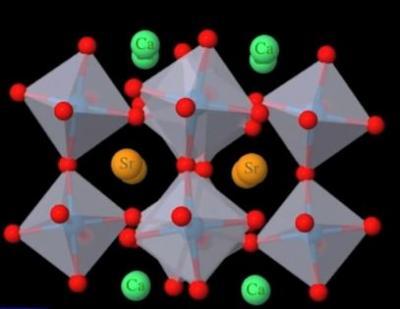"They challenge our notions of what it means for a material to be a metal or to be polar," Rondinelli said. "By polar, I mean just like the water molecule, which has an asymmetric distribution of charge. It's nearly the same case here, where the material we predict is polar, but it is simultaneously metallic owing to mobile electrons, rather than bound electrons."
Scientists have hypothesized the existence of polar metals, dubbed "metallic ferroeletrics" by Nobel Laureate Phil Anderson, since the 1960s -but with little theoretical understanding of how to discover them. Since then, researchers have essentially stumbled upon about 30 metals with asymmetric charge distributions.
More than half a century later, Rondinelli and Puggioni were able to examine the crystal structure of these known polar metals, and show that the geometric arrangement of atoms is key to understanding their asymmetric charge distribution. This information, in turn, will make it possible for materials scientists to discover more compounds.
Putting their theory to the test, the duo designed a polar metal of their own. The material, chemically termed strontium-calcium ruthenate, (Sr,Ca)Ru¬O6, is currently in the theoretical stage, but Rondinelli and Puggioni are working with experimental groups around the country to produce the compound in a laboratory.
While it's too early to predict what applications these materials are ideally suited for, other materials in this class of polar metals are superconducting—they are able to conduct electricity with zero resistance—so they could find use in a variety of advanced electronic and thermal devices. The pair's research was funded by the Army Research Office's Young Investigator Program and was recently published in Nature Communications.
"The way these materials behave and the reasons for their stability are rather unconventional, yet our classification scheme provides a general design strategy that could guide the discovery and realization of many more polar metals," said Rondinelli. "I don't believe these materials are as rare as is currently thought despite their counterintuitive nature; researchers may have simply been looking in the wrong places."

Researchers in Drexel's College of Engineering have discovered a way to classify and predict the existence of a rare breed of electrically conductive polar metals.
(Photo Credit: Drexel University/Materials Science Engineering)

Drs. James Rondinelli and Danilo Puggioni, researchers in Drexel's College of Engineering, have theoretically predicted the existence of a polarized metal chemically termed strontium-calcium ruthenate and are working with experimental groups to produce the compound in a laboratory.
(Photo Credit: Drexel University/Materials Science Engineering)
Source: Drexel University